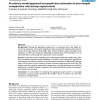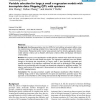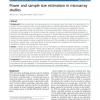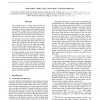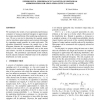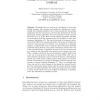100
click to vote
BMCBI
2008
15 years 16 days ago
2008
Background: Choosing the appropriate sample size is an important step in the design of a microarray experiment, and recently methods have been proposed that estimate sample sizes ...
130
click to vote
BMCBI
2008
15 years 16 days ago
2008
Background: Identifying quantitative trait loci (QTL) for both additive and epistatic effects raises the statistical issue of selecting variables from a large number of candidates...
BMCBI
2010
15 years 16 days ago
2010
Background: Before conducting a microarray experiment, one important issue that needs to be determined is the number of arrays required in order to have adequate power to identify...
115
click to vote
BMCBI
2010
15 years 16 days ago
2010
Background: Determining a suitable sample size is an important step in the planning of microarray experiments. Increasing the number of arrays gives more statistical power, but ad...
104
Voted
COLT
2008
Springer
15 years 1 months ago
2008
Springer
The problem of how a teacher and a learner can cooperate in the process of learning concepts from examples in order to minimize the required sample size without “coding tricks�...
83
Voted
WSC
2004
15 years 1 months ago
2004
We summarize the results of an experimental performance evaluation of using an empirical histogram to approximate the steady-state distribution of the underlying stochastic proces...
87
Voted
NIPS
2007
15 years 1 months ago
2007
Over the past few years, the notion of stability in data clustering has received growing attention as a cluster validation criterion in a sample-based framework. However, recent w...
97
Voted
NIPS
2008
15 years 1 months ago
2008
We study the behavior of block 1/ 2 regularization for multivariate regression, where a K-dimensional response vector is regressed upon a fixed set of p covariates. The problem of...
118
Voted
DIS
2006
Springer
15 years 2 months ago
2006
Springer
Knowledge discovery systems are constrained by three main limited resources: time, memory and sample size. Sample size is traditionally the dominant limitation, but in many present...
87
Voted
WSC
2007
15 years 2 months ago
2007
Two-stage selection procedures have been widely studied and applied in determining the required sample size (i.e., the number of replications or batches) for selecting the best of...
